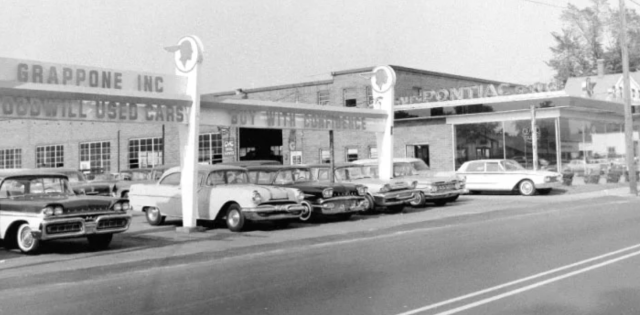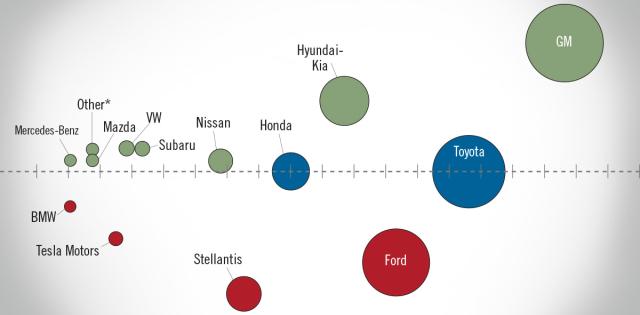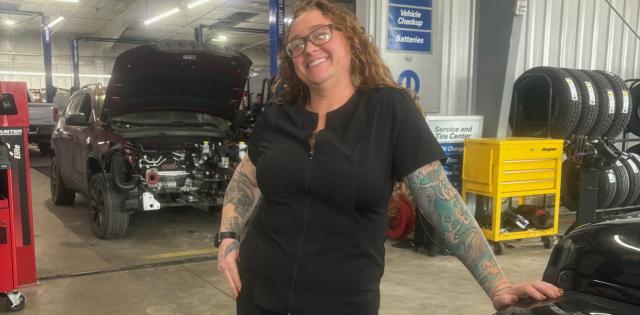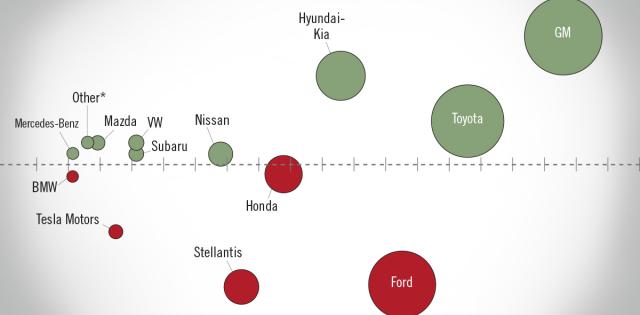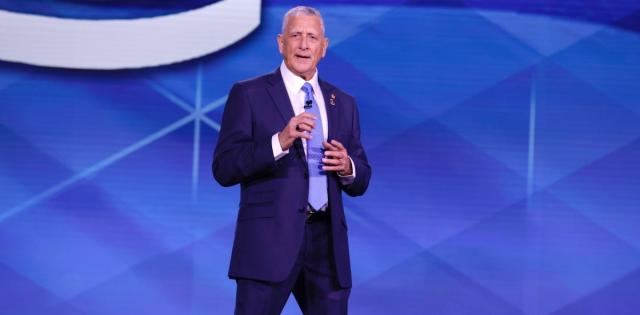The article below is sourced from Bloomberg Wire Service. The views and opinions expressed in this story are those of the Bloomberg Wire Service and do not necessarily reflect the official policy or position of NADA.
US car buyers are headed to showrooms out of sheer necessity, defying high interest rates and fat sticker prices to replace cars that on average have been on the road for more than 12 years.
High monthly payments and the early effects of a widespread strike at US carmakers didn’t stop vehicle sales from rising in the third quarter. Dealers have larger inventories than they’ve had for several years, which could attract more buyers for the rest of the year as pent-up demand fuels sales.
“You’re seeing the effects of having the oldest fleet we’ve ever had” vying with higher interest rates and inflation, Jack Hollis, Toyota Motor Co.’s US sales chief, said in an interview. “The industry is coming back to more of a normal state.”
New car sales likely rose more than 15% in the three months to Sept. 31 on a seasonally adjusted annualized rate of 15.4 million vehicles, according to research from Cox Automotive.
“Pleasantly surprised may be best term to describe the new vehicle market,” said Cox Senior Economist Charlie Chesbrough. “Pent-up demand created by post-Covid supply disruption has been driving up” sales, he said.
For the full year, sales are on track to climb almost 14%, Cox estimates, in part because prices — while still lofty — are no longer at record levels. The average new vehicle costs about $47,000, down a touch from nearly $50,000 earlier in the year, according to Cox.
September was a strong month, with a consensus of five analysts pegging the seasonally adjusted annualized selling rate at more than 15.4 million cars, up from 13.6 million a year ago.
That upswing could be tripped up by a United Auto Workers strike that has entered its third week. So far, the union has limited the walkouts to select facilities operated by General Motors Co., Ford Motor Co. and Stellantis NV. But a protracted and more widespread work stoppage could mean much leaner inventories and scaled back dealer incentives for consumers — just as higher production levels had begun to make up for pandemic-era shortages.
Last week, the UAW expanded the work stoppage to two additional plants operated by GM and Ford which make mid-size SUVs.
GM, Stellantis, Toyota and other carmakers plan to report results for the just-ended quarter on Tuesday.
The strike has yet to put a crimp in supply or demand for new cars, but industry executives and dealers are growing wary.
“Business is pretty good,” said Jim Hardick, a managing partner of the Moritz dealerships in Fort Worth, Texas, where he sells the Chevrolet, Chrysler, Jeep, Dodge and Ram brands. “We aren’t up as high with Chrysler as we are with Chevy. We’re ending 2023 and we’re probably going to have supply chain issues because of the strike.”
GM and its leading brand Chevrolet are expected to have had a strong quarter. Cox projects that the Detroit automaker’s US sales will be up 19.3% for the quarter and that it’s gained more market share than every other brand except Honda Motor Co. and Nissan Motor Co.
That bodes well for GM’s profits in the third quarter, giving the company cash to withstand a longer strike. But it also means the automaker could feel pressure to end the walkouts sooner to preserve sales momentum.
“Big winner of 2023 so far has to be GM,” Chesbrough said. “The strike could not come at a worse time given their momentum.”
Strike Risk
Chevy could be hit hard by the strike since the brand only has about 50 days worth of inventory on its lots. The Colorado pickup truck is very lean because the union stopped work at the plant on Sept. 15. Ford has a similar issue with its Bronco SUV and Ranger pickup and Stellantis could run short on the Jeep Wrangler SUV and Gladiator truck due to a walkout at its Toledo, Ohio, factory.
Ford is in a better position with more than 80 days worth of vehicles. Stellantis’ moneymakers, Jeep and Ram pickups, both have more than 100 days worth of stock currently, Cox said.
A prolonged strike may erode that inventory build, but won’t necessarily benefit rival brands, which already face supply challenges. Toyota’s namesake brand has an average eight day supply on dealer lots in the US.
“No one likes a strike,” Hollis of Toyota said. “We clearly are watching it because it will affect the entire industry.”
A longer walkout will undercut the rebuild of inventory and softening of prices that’s helping propel vehicle sales.
“If the strike lasts beyond Thanksgiving, the industry is likely to see a setback and a repeat of much of dynamics we saw in 2021,” said Cox Chief Economist Jonathan Smoke. “If we see supply tighten, prices will go up and incentives come down and affordability will get worse.”
Wanted: Cheap Cars
Latent demand may keep sales at a solid level, but even without a long strike it’s tough to see sustained growth in the US market into next year due to high prices and a dearth of cheaper models, said Jessica Caldwell, head of insights for Edmunds.com Inc.
Caldwell said cars priced below $50,000 are turning faster on dealer lots than pricier models, but there aren’t enough of them. Interest rates now average 7.4%, the highest level since the 2008 financial crisis. That means today’s car buyer is paying more than $9,000 on the average 60-month loan.
“Affordability is an issue,” Caldwell said. “Growth would be minimal because nothing is spurring it.”
For more stories like this, bookmark www.NADAheadlines.org as a favorite in the browser of your choice and subscribe to our newsletter here:


